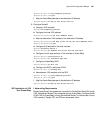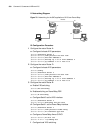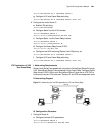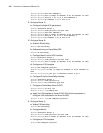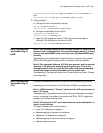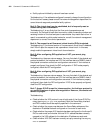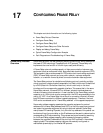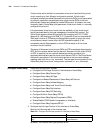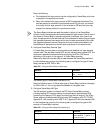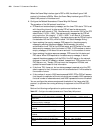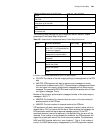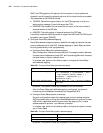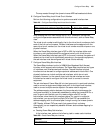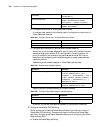
17
CONFIGURING FRAME RELAY
This chapter contains information on the following topics:
■ Frame Relay Protocol Overview
■ Configure Frame Relay
■ Configure Frame Relay QoS
■ Configure Frame Relay over Other Protocols
■ Display and debug Frame Relay
■ Typical Frame Relay Configuration Example
■ Fault Diagnosis and Troubleshooting of Frame Relay
Frame Relay Protocol
Overview
Frame Relay protocol is a fast-packaging switching technology, which develops on
the basis of X.25 technology. Compared with X.25 protocol, Frame Relay only
implements the core function of the link layer, easily and efficiently.
A Frame Relay network provides capacity of data communication between user
equipment (such as routers and hosts), also called data terminal equipment (DTE).
The equipment that provides access for DTE is data circuit-terminating equipment
(DCE). A Frame Relay network can be a public network, a private enterprise
network, or a network formed by direct connection between data equipment.
The Frame Relay protocol is a statistics multiplexing protocol, providing multiple
virtual circuits on a single physical transmission line. Each virtual circuit is identified
by a DLCI (Data Link Connection Identifier), which is valid only on the local
interface and the corresponding opposite interface. This means that in the same
Frame Relay network, the same DLCI on different physical interfaces does not
indicate the same virtual connection. A user interface in the Frame Relay network
supports up to 1024 virtual circuits, among which the DLCI range available to the
user is 16~1007. As a Frame Relay virtual circuit is connection oriented, different
local DLCIs are connected to different opposite equipment. Therefore, the local
DLCI can be considered as the "Frame Relay address" of the opposite equipment.
Frame relay address mapping associates the opposite equipment's protocol
address with its Frame Relay address (local DLCI), so that the upper layer protocol
can locate the opposite equipment by using its protocol address. Frame Relay
mainly bears IP. In sending IP packet, only the next hop address of the packet can
be obtained from the route table, so this IP address must be used to determine the
corresponding DLCI before sending. This process can be performed by searching
for the Frame Relay address mapping table, because the mapping relation
between the opposite IP address and the next hop DLCI is stored in the address
mapping table. The address mapping table can be manually configured, or
maintained dynamically by the Inverse ARP protocol.



